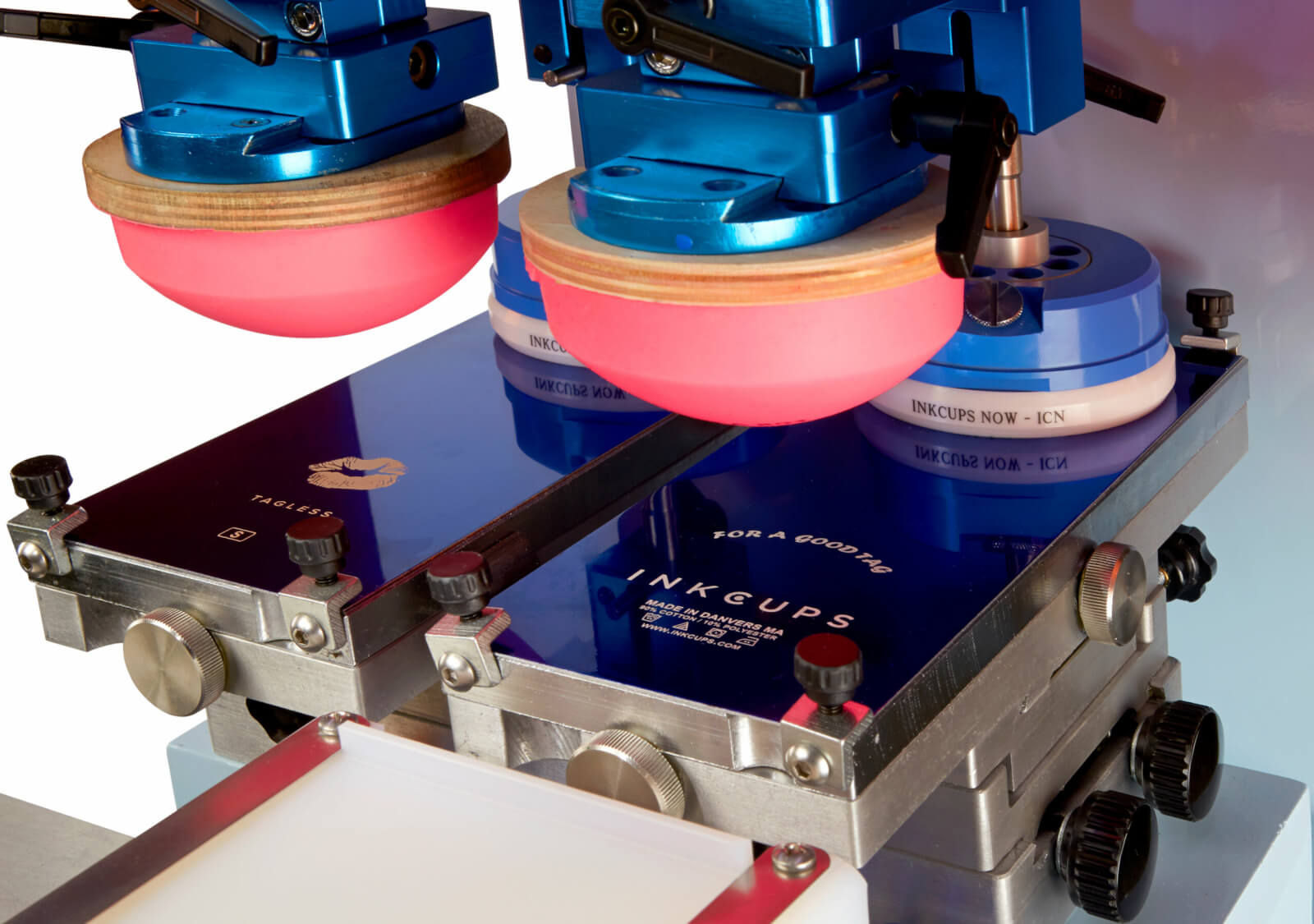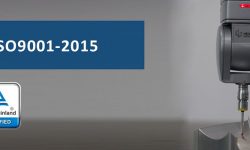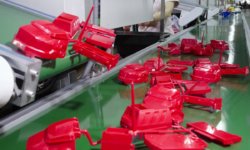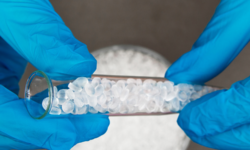Pad printing, a form of surface finishing available for parts produced via CNC machining, injection molding, and other processes, is a unique printing process suitable for printing on 3D shapes with non-flat surfaces.
Fast and repeatable, pad printing allows for a 2D image or pattern to be printed onto a 3D object. It is a valuable tool for manufacturers because the 3D substrate can be curved, grooved, soft, or possessing another characteristic that makes it otherwise difficult to print on using other techniques. Pad printing is used in a wide range of industries, from automotive to consumer goods to pottery.
This article goes over the basics of pad printing, explaining how pad printing works, the benefits of pad printing over other printing methods, and useful real-world applications of pad printing.
What is pad printing?
Pad printing (sometimes called tampography or tampo printing) is a printing process that uses a three-dimensional printing pad, typically made from silicone rubber, to print an ink image onto a three-dimensional object. The process became widespread in the 20th century for printing details onto watch dials but now has a much wider range of uses.
During the pad printing process, the silicone pad presses onto a print plate where an etched image has been filled with ink. The pad picks up the ink, lifts up, then presses down onto the substrate to transfer the ink onto its surface. Because the pad is flexible, it can squeeze itself over the surface of the substrate, no matter its shape. This means it can print images onto a variety of objects such as balls, wheels, pens, t-shirts, lightbulbs, and electronic devices.
How does pad printing work?
The most common type of pad printing machine today uses a sealed ink cup system for supplying ink to the print plate. It consists of three main parts:
- The ink cup, a sealed container filled with ink
- The print plate or cliché, onto which the desired image, text, or pattern has been etched
- The printing pad, a deformable silicone pad that transfers ink from plate to substrate
Print plate preparation
The first step of the pad printing process is the creation of the print plate or cliché, which contains an etching of the image to be transferred. The print plate is typically made from a photopolymer (short or medium production runs, up to ~50,000) or steel (longer production runs, up to ~1,000,000). Two primary methods exist for adding the image to the plate: chemical etching and laser engraving.
Ink filling
When the workstation is set up with the newly created print plate, the main part of the process can begin. First, the ink cup descends to the etched plate and floods it with ink. The cup then moves away from the plate, which exposes the freshly inked plate to air. The exposed ink then turns sticky, which will help it adhere to the printing pad.
Transfer to pad
Printing pads come in different shapes, sizes, and levels of hardness depending on the substrate. Pads can be large, small, square, round, beveled, angled, hard, soft, etc. Once the print plate has been filled with ink and the cup has moved away, the printing pad descends and presses onto the inky etching. Contact between the pad and plate creates air pressure, which causes the ink to lift. The pad thus absorbs the image, then lifts up again. (The ink cup then simultaneously re-floods the etching with ink while the printing pad lifts up.)
Transfer to object
Finally, the printing pad — now with the inky image on its surface — descends and presses onto the substrate, transferring the image onto it. The pad then lifts up, readying the machine for the next cycle.
Pad printing uses
Although preparation of clichés — especially steel ones — can be costly, pad printing is a highly efficient surface finishing process suitable for a range of parts. It can be used to transfer images, patterns, logos, text, symbols, barcodes, tags, serial numbers, dates, and more onto a range of objects.
Below are some common and interesting pad printing applications, all of which take advantage of the unique characteristics of the process.
Wrist watch dials
One of the first major applications of pad printing was for wrist watch dials, and the process is still widely used in this niche area. Watch dials are suited to pad printing because they contain incredibly fine details — numbers, minute markings, a company logo, etc. — that must be printed onto an enamel surface that often has a rounded perimeter. Very small printing pads are required for this purpose.
Branded promotional gifts
Companies can promote themselves with business cards and pamphlets, but a much more powerful form of marketing involves branded items like pens, keychains, and balls. Because these items have irregular shapes, they are highly suited to a process like pad printing rather than a process like screen printing or laser engraving. A round, firm printing pad is ideal for printing a company logo onto an object like a golf ball, while a softer pad could be used for a deformable object like a stress ball.
Other uses
Pad printing has a number of other uses, and there are plenty more to be discovered. Some further pad printing examples are listed below.
- Serial numbers and expiry dates on bottle caps
- Images and ingredients on food packaging
- Numbers and marking on syringes
- Patterns on pottery and kitchenware such as bowls and plates
- Graphics on toys such as model cars
- Letters, numbers, and symbols on computer keyboards
- Logos on sporting equipment like balls and hockey pucks
- Markings on skate and skateboard wheels
- On-fabric tags inside t-shirts
- Images on Christmas baubles
- Text and information on electronics housings
- Tiny marking on pharmaceuticals (capsules)
- Logos on worker hard hats
- Serial numbers and information on electrical cables
- Expiry dates on eggs (using very soft pad)
Pad printing with 3ERP
3ERP can carry out pad printing on a wide range of parts, even those with complex dimensions, regardless of the production process. We also offer silk-screen printing, rub-on decals (dry transfer), and laser engraving — processes that can also be suitable for adding text, logos, and other details to certain parts. Request a free quote for your next project.








